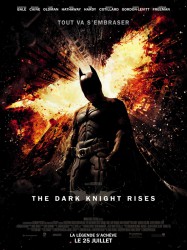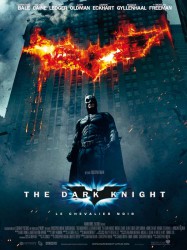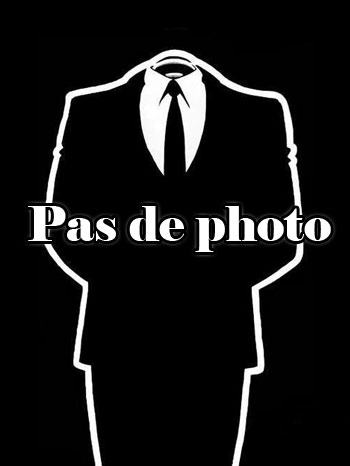Batman

Si vous aimez ce personnage, faites-le savoir !
Vrai nom Bruce Wayne (véritable identité)
Bruce Wayne, alias Batman, est un super-héros de fiction appartenant à l'univers de DC Comics. Créé par le dessinateur Bob Kane et le scénariste Bill Finger, il apparaît pour la première fois dans le comic book Detective Comics n 27 en 1939 - mai 1939 comme date sur la couverture mais la date réelle de parution est le 30 mars 1939 - sous le nom de The Bat-Man. Bien que ce soit le succès de Superman qui ait amené sa création, il se détache de ce modèle puisqu'il n'a aucun pouvoir surhumain. Batman n'est en effet qu'un simple humain qui a décidé de lutter contre le crime après avoir vu ses parents se faire abattre par un voleur dans une ruelle de Gotham City, la ville où se déroulent la plupart de ses aventures. Malgré sa réputation de héros solitaire, il sait s'entourer d'alliés, comme Robin, son majordome Alfred Pennyworth ou encore le commissaire de police James Gordon.
Batman travaille également régulièrement avec Superman, malgré des divergences d'opinions sur la façon de lutter contre le crime, et a fait partie de plusieurs équipes : la Société de justice d'Amérique, la Ligue de justice d'Amérique et les Outsiders. Des surnoms lui sont parfois accolés : The Caped Crusader, The Dark Knight, The World's Greatest Detective, ou encore en français, le Justicier masqué ou le Chevalier Noir. Toute une série de super-vilains s'opposent régulièrement à lui comme le Joker, Double-Face, l'Épouvantail, Bane, Ra's al Ghul ou le Pingouin.
Batman est devenu un personnage très populaire rapidement après sa première apparition, ce qui s'est traduit par la création de son propre titre Batman, en 1940. Au cours des années, différentes interprétations du personnage ont été proposées. Par ailleurs, Batman a été adapté dans une grande variété de médias. À la télévision, il est dès les années 1940 le héros de deux serials, Batman et Batman et Robin, puis de la série Batman de 1966 à 1968, ainsi que d'un film réalisé par Leslie H. Martinson en 1966 et tiré de la même série télévisée. De multiples série télévisées d'animation verront également le jour au fil du temps, dont Batman en 1992. Au cinéma deux séries de films lui ont été consacrées, la première dans les années 1990 a été réalisée par Tim Burton et Joel Schumacher, la seconde dans les années 2000 a été réalisée par Christopher Nolan, avant que Batman n'apparaisse dans les films de l'univers cinématographique DC à partir de 2016. Plusieurs jeux vidéo ont utilisé le personnage avec un succès relatif jusqu'à la dernière série de jeux inaugurée en 2009 par Arkham Asylum qui a été saluée par la critique et le public.
Biographie
Batman's history has undergone various revisions, both minor and major. Few elements of the character's history have remained constant. Scholars William Uricchio and Roberta E. Pearson noted in the early 1990s, "Unlike some fictional characters, the Batman has no primary urtext set in a specific period, but has rather existed in a plethora of equally valid texts constantly appearing over more than five decades."The central fixed event in the Batman stories is the character's origin story. As a little boy, Bruce Wayne is horrified and traumatized to see his parents, the physician Dr. Thomas Wayne and his wife Martha, being murdered by a mugger in front of his very eyes. This drives him to fight crime in Gotham City as Batman. Pearson and Uricchio also noted beyond the origin story and such events as the introduction of Robin, "Until recently, the fixed and accruing and hence, canonized, events have been few in number", a situation altered by an increased effort by later Batman editors such as Dennis O'Neil to ensure consistency and continuity between stories.
Golden Age
In Batman's first appearance in Detective Comics #27, he is already operating as a crime-fighter. Batman's origin is first presented in Detective Comics #33 (November 1939) and is later expanded upon in Batman #47. As these comics state, Bruce Wayne is born to Dr. Thomas Wayne and his wife Martha, two very wealthy and charitable Gotham City socialites. Bruce is brought up in Wayne Manor, and leads a happy and privileged existence until the age of eight, when his parents are killed by a small-time criminal named Joe Chill while on their way home from a movie theater. That night, Bruce Wayne swears an oath to spend his life fighting crime. He engages in intense intellectual and physical training; however, he realizes that these skills alone would not be enough. "Criminals are a superstitious cowardly lot", Wayne remarks, "so my disguise must be able to strike terror into their hearts. I must be a creature of the night, black, terrible..." As if responding to his desires, a bat suddenly flies through the window, inspiring Bruce to take on the persona of Batman.
In early strips, Batman's career as a vigilante earns him the ire of the police. During this period, Bruce Wayne has a fiancée named Julie Madison. In Batman #1 takes in an orphaned circus acrobat, Dick Grayson, who becomes his junior counterpart, Robin. Batman also becomes a founding member of the Justice Society of America, although he, like Superman, is an honorary member, and thus only participates occasionally. Batman's relationship with the law thaws quickly, and he is made an honorary member of Gotham City's police department. During this time, Alfred Pennyworth arrives at Wayne Manor, and after deducing the Dynamic Duo's secret identities, joins their service as their butler.
Silver Age
The Silver Age of Comic Books in DC Comics is sometimes held to have begun in 1956 when the publisher introduced Barry Allen as a new, updated version of The Flash. Batman is not significantly changed by the late 1950s for the continuity which would be later referred to as Earth-One. The lighter tone Batman had taken in the period between the Golden and Silver Ages led to the stories of the late 1950s and early 1960s that often feature many science-fiction elements, and Batman is not significantly updated in the manner of other characters until Detective Comics #327 (May 1964), in which Batman reverts to his detective roots, with most science-fiction elements jettisoned from the series.
After the introduction of DC Comics' multiverse in the 1960s, DC established that stories from the Golden Age star the Earth-Two Batman, a character from a parallel world. This version of Batman partners with and marries the reformed Earth-Two Catwoman, Selina Kyle (as shown in Superman Family #211). They have a daughter, Helena Wayne, who as the Huntress, becomes (along with Dick Grayson, the Earth-Two Robin) Gotham's protector once Wayne retires from the position to become police commissioner, a position he occupies until he is killed during one final adventure as Batman. Batman titles however often ignored that a distinction had been made between the pre-revamp and post-revamp Batmen (since unlike The Flash or Green Lantern, Batman comics had been published without interruption through the 1950s) and would occasionally make reference to stories from the Golden Age. Nevertheless, details of Batman's history were altered or expanded upon through the decades. Additions include meetings with a future Superman during his youth, his upbringing by his uncle Philip Wayne (introduced in Batman #208, January/February 1969) after his parents' death, and appearances of his father and himself as prototypical versions of Batman and Robin, respectively. In 1980 then-editor Paul Levitz commissioned the Untold Legend of the Batman limited series to thoroughly chronicle Batman's origin and history.
Batman meets and regularly works with other heroes during the Silver Age, most notably Superman, whom he began regularly working alongside in a series of team-ups in World's Finest Comics, starting in 1954 and continuing through the series' cancellation in 1986. Batman and Superman are usually depicted as close friends. As a founding member of the Justice League of America, Batman appears in its first story, in 1960's Brave and the Bold #28. In the 1970s and 1980s, Brave and the Bold became a Batman title, in which Batman teams up with a different DC Universe superhero each month.
In 1969, Dick Grayson attends college as part of DC Comics' effort to revise the Batman comics. Additionally, Batman also moves from his mansion, Wayne Manor into a penthouse apartment atop the Wayne Foundation building in downtown Gotham City, in order to be closer to Gotham City's crime. Batman spends the 1970s and early 1980s mainly working solo, with occasional team-ups with Robin and/or Batgirl. Batman's adventures also become somewhat darker and more grim during this period, depicting increasingly violent crimes, including the first appearance (since the early Golden Age) of the Joker as a homicidal psychopath, and the arrival of Ra's al Ghul, a centuries-old terrorist who knows Batman's secret identity. In the 1980s, Dick Grayson becomes Nightwing.
In the final issue of Brave and the Bold in 1983, Batman quits the Justice League and forms a new group called the Outsiders. He serves as the team's leader until Batman and the Outsiders #32 (1986) and the comic subsequently changed its title.
Modern Age
After the 12-issue limited series Crisis on Infinite Earths, DC Comics retconned the histories of some major characters in an attempt at updating them for contemporary audiences. Frank Miller retold Batman's origin in the storyline "Year One" from Batman #404–407, which emphasizes a grittier tone in the character. Though the Earth-Two Batman is erased from history, many stories of Batman's Silver Age/Earth-One career (along with an amount of Golden Age ones) remain canonical in the post-Crisis universe, with his origins remaining the same in essence, despite alteration. For example, Gotham's police are mostly corrupt, setting up further need for Batman's existence. The guardian Phillip Wayne is removed leaving young Bruce to be raised by Alfred Pennyworth. Additionally, Batman is no longer a founding member of the Justice League of America, although he becomes leader for a short time of a new incarnation of the team launched in 1987. To help fill in the revised backstory for Batman following Crisis, DC launched a new Batman title called Legends of the Dark Knight in 1989 and has published various miniseries and one-shot stories since then that largely take place during the "Year One" period.
Subsequently, Batman begins exhibiting an excessive, reckless approach to his crime-fighting, a result of the pain of losing Jason Todd. Batman works solo until the decade's close, when Tim Drake becomes the new Robin.
Many of the major Batman storylines since the 1990s have been inter-title crossovers that run for a number of issues. In 1993, DC published "Knightfall". During the storyline's first phase, the new villain Bane paralyzes Batman, leading Wayne to ask Azrael to take on the role. After the end of "Knightfall", the storylines split in two directions, following both the Azrael-Batman's adventures, and Bruce Wayne's quest to become Batman once more. The story arcs realign in "KnightsEnd", as Azrael becomes increasingly violent and is defeated by a healed Bruce Wayne. Wayne hands the Batman mantle to Dick Grayson (then Nightwing) for an interim period, while Wayne trains for a return to the role.
The 1994 company-wide crossover storyline "Zero Hour" changes aspects of DC continuity again, including those of Batman. Noteworthy among these changes is that the general populace and the criminal element now considers Batman an urban legend rather than a known force.
Batman once again becomes a member of the Justice League during Grant Morrison's 1996 relaunch of the series, titled JLA. During this time, Gotham City faces catastrophe in the decade's closing crossover arc. In 1998's "Cataclysm" storyline, Gotham City is devastated by an earthquake and ultimately cut off from the United States. Deprived of many of his technological resources, Batman fights to reclaim the city from legions of gangs during 1999's "No Man's Land".
Meanwhile, Batman's relationship with the Gotham City Police Department changed for the worse with the events of "Batman: Officer Down" and "Batman: War Games/War Crimes"; Batman's long-time law enforcement allies Commissioner Gordon and Harvey Bullock are forced out of the police department in "Officer Down", while "War Games" and "War Crimes" saw Batman become a wanted fugitive after a contingency plan of his to neutralize Gotham City's criminal underworld is accidentally triggered, resulting in a massive gang war that ends with the sadistic Black Mask the undisputed ruler of the city's criminal gangs. Lex Luthor arranges for the murder of Batman's on-again, off-again love interest Vesper (introduced in the mid-1990s) during the "Bruce Wayne: Murderer?" and "Bruce Wayne: Fugitive" story arcs. Though Batman is able to clear his name, he loses another ally in the form of his new bodyguard Sasha, who is recruited into the organization known as "Checkmate" while stuck in prison due to her refusal to turn state's evidence against her employer. While he was unable to prove that Luthor was behind the murder of Vesper, Batman does get his revenge with help from Talia al Ghul in Superman/Batman #1–6.
DC's 2005 limited series Identity Crisis reveals that JLA member Zatanna had altered Batman's memories to prevent him from stopping the League from lobotomizing Dr. Light after he sexually assaulted Sue Dibny. Batman later creates the Brother I satellite surveillance system to watch over and if necessary, kill the other heroes. The revelation of Batman's creation and his tacit responsibility for Blue Beetle's death becomes a driving force in the lead-up to the Infinite Crisis miniseries, which again restructures DC continuity. Batman and a team of superheroes destroy Brother Eye and the OMACs, though at the very end Batman reaches his apparent breaking point when Alexander Luthor Jr. seriously wounds Nightwing. Picking up a gun, Batman nearly shoots Luthor in order to avenge his former sidekick, until Wonder Woman convinces him to not pull the trigger.
Following Infinite Crisis, Bruce Wayne, Dick Grayson (having recovered from his wounds), and Tim Drake retrace the steps Bruce had taken when he originally left Gotham City, to "rebuild Batman". In the Face the Face storyline, Batman and Robin return to Gotham City after their year-long absence. Part of this absence is captured during Week 30 of the 52 series, which shows Batman fighting his inner demons. Later on in 52, Batman is shown undergoing an intense meditation ritual in Nanda Parbat. This becomes an important part of the regular Batman title, which reveals that Batman is reborn as a more effective crime fighter while undergoing this ritual, having "hunted down and ate" the last traces of fear in his mind. At the end of the "Face the Face" story arc, Bruce officially adopts Tim (who had lost both of his parents at various points in the character's history) as his son. The follow-up story arc in Batman, Batman and Son, introduces Damian Wayne, who is Batman's son with Talia al Ghul. Although originally in Son of the Demon, Bruce's coupling with Talia was implied to be consensual, this arc ret-conned it into Talia forcing herself on Bruce.
Batman, along with Superman and Wonder Woman, reforms the Justice League in the new Justice League of America series, and is leading the newest incarnation of the Outsiders.
Grant Morrison's 2008 storyline, "Batman R.I.P." featured Batman being physically and mentally broken by the enigmatic villain Doctor Hurt and attracted news coverage in advance of its highly promoted conclusion, which would speculated to feature the death of Bruce Wayne. However, though Batman is shown to possibly perish at the end of the arc, the two-issue arc "Last Rites", which leads into the crossover storylines "Final Crisis", shows that Batman survives his helicopter crash into the Gotham City River and returns to the Batcave, only to be summoned to the Hall of Justice by the JLA to help investigate the New God Orion's death. The story ends with Batman retrieving the god-killing bullet used to kill Orion, setting up its use in "Final Crisis". In the pages of Final Crisis Batman is reduced to a charred skeleton. In Final Crisis #7 Wayne is shown witnessing the passing of the first man, Anthro. Wayne's "death" sets up the three-issue Battle for the Cowl miniseries in which Wayne's ex-proteges compete for the "right" to assume the role of Batman, which concludes with Grayson becoming Batman, while Tim Drake takes on the identity of Red Robin. Dick and Damian continue as Batman and Robin, and in the crossover storyline "Blackest Night", what appears to be Bruce's corpse is reanimated as a Black Lantern zombie, but is later shown that Bruce's corpse is one of Darkseid's failed Batman clones. Dick and Batman's other friends conclude that Bruce is alive.
Bruce subsequently returns in Morrison's miniseries Batman: The Return of Bruce Wayne, which depicts his travels through time from prehistory to present-day Gotham. Bruce's return sets up Batman Incorporated, an ongoing series which focuses on Wayne franchising the Batman identity across the globe, allowing Dick and Damian to continue as Gotham's Dynamic Duo. Bruce publicly announces that Wayne Enterprises will aid Batman on his mission, known as "Batman, Incorporated". Due to rebooted continuity that occurred as part of DC's 2011 relaunch of all of its book, The New 52, however, Grayson is restored as Nightwing with Wayne serving as the sole Batman once again. The relaunch also interrupts the publication of Batman, Incorporated, which resumed its story in 2012-2013 with changes to suit the new status quo.
Ses meilleurs films
Joué par les acteurs
Filmographie de Batman (74 films)

The Batman (2022)
Réalisé par Matt Reeves
Origine Etats-Unis
Genres Drame, Science-fiction, Thriller, Action, Policier
Thèmes Batman, Super-héros, Super-héros inspiré de comics
Acteurs Robert Pattinson, Zoë Naelle Kravitz, Paul Dano, Jeffrey Wright, Colin Farrell, Andy Serkis
Note77%





Batman fait sa première apparition en solo de l'Univers Cinématographique DC.
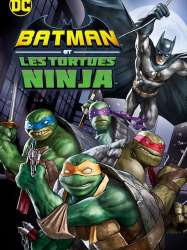
Batman et les Tortues Ninja (2019)
, 1h24Origine Etats-Unis
Genres Science-fiction, Action, Policier, Animation
Thèmes Mise en scène d'un animal, Mise en scène d'une tortue, Batman, Super-héros, Super-héros inspiré de comics, Reptile
Acteurs Troy Baker, Darren Criss, Kyle Mooney, Baron Vaughn, Eric Bauza, Rachel Bloom
Note70%





Batman, Batgirl et Robin forment une alliance avec les Tortues Ninja pour affronter Shredder qui s'est apparemment joint à Ra's al Ghul et sa Ligue des Assassins, afin de pouvoir prendre le contrôle de la ville.
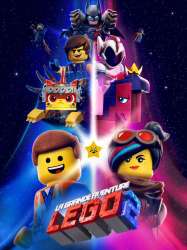
La Grande Aventure LEGO 2 (2019)
, 1h47Réalisé par Mike Mitchell
Origine Etats-Unis
Genres Science-fiction, Comédie, Fantasy, Action, Aventure, Animation
Thèmes Jeu, Batman, Super-héros, Jouet, Super-héros inspiré de comics
Acteurs Chris Pratt, Elizabeth Banks, Will Arnett, Ralph Fiennes, Nick Offerman, Alison Brie
Note65%





Cela fait cinq ans que tout était génial et les citoyens font face à une nouvelle menace énorme : les Duplo envahissent l'espace, détruisant tout plus vite qu'ils ne peuvent reconstruire.
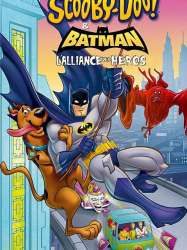 , 1h15
, 1h15Origine Etats-Unis
Genres Science-fiction, Comédie, Action, Animation
Thèmes Mise en scène d'un animal, Magie, Mise en scène d'un chien, Batman, Super-héros, Comédie horrifique, Super-héros inspiré de comics, Mise en scène d'un mammifère
Acteurs Frank Welker, Matthew Lillard, Grey DeLisle, Kate Micucci, Jeff Bennett, Diedrich Bader
Note65%





Scooby Doo et la sympathique équipe de Mystère et C trouvent en Batman un allié de poids pour lutter contre de malfaisants personnages masqués.

Batman: Gotham by Gaslight (2018)
, 1h18Origine Etats-Unis
Genres Science-fiction, Thriller, Action, Animation
Thèmes Batman, Super-héros, Super-héros inspiré de comics
Acteurs Bruce Greenwood, Jennifer Carpenter, Anthony Head, Scott Patterson, John DiMaggio, Yuri Lowenthal
Note66%





Dans une version alternative et victorienne de Gotham City à la fin du 19 siècle, Batman initie sa guerre contre le crime alors qu'il enquête sur une nouvelle série de meurtres commis par Jack l'Éventreur.

Teen Titans GO! Le film (2018)
, 1h24Origine Etats-Unis
Genres Science-fiction, Comédie, Action, Animation
Acteurs Scott Menville, Hynden Walch, Greg Cipes, Tara Strong, Khary Payton, Kristen Bell
Note67%





Robin et les autres membres de la Teen Titans, sont assez déçus d'être les seuls superhéros de l'univers DC Comics à ne pas avoir eu leur propre film. Ils vont tout faire pour devenir des superhéros légendaires, afin de remédier à cela. Vont-ils y arriver et avoir leur film ?
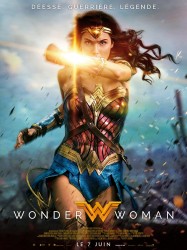
Wonder Woman (2017)
, 2h21Réalisé par Patty Jenkins
Origine Etats-Unis
Genres Science-fiction, Guerre, Fantasy, Action, Aventure, Romance
Thèmes Féminisme, Mythologie, Politique, Super-héros, Politique, Super-héros inspiré de comics, Mythologie gréco-romaine
Acteurs Gal Gadot, Chris Pine, Emily Carey, Robin Wright, David Thewlis, Lucy Davis
Note72%





Vivant à Paris où elle travaille au musée du Louvre, Diana Prince reçoit de la part de Bruce Wayne une photographie la montrant au front lors de la Première Guerre mondiale aux côtés de Steve Trevor et ses amis. Elle se remémore alors sa jeunesse sur l'île de Themyscira, parmi les Amazones, qu'elle a quittée pour affronter Arès, le dieu de la guerre, et devenir Wonder Woman.
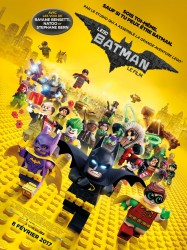
Lego Batman, le film (2017)
, 1h44Origine Etats-Unis
Genres Science-fiction, Comédie, Fantasy, Action, Animation
Thèmes Jeu, Batman, Super-héros, Jouet, Dystopique, Super-héros inspiré de comics
Acteurs Will Arnett, Michael Cera, Zach Galifianakis, Rosario Dawson, Ralph Fiennes, Jenny Slate
Note72%





Parvenant toujours à sauver Gotham City des attaques des super-vilains, Batman est devenu arrogant pour mieux cacher sa profonde solitude. Vexé, le Joker se laisse enfermer à l’asile d'Arkham. Mais Batman comme Barbara Gordon, la nouvelle commissaire de la ville, soupçonnent un plan caché. Le Joker cherche à rejoindre la zone fantôme pour s'allier avec les pires méchants. Batman en cherchant bien faire qui l'y envoie avec l'aide de Robin. Le Joker parvient à s'échapper de la zone fantôme à la tête d'une armée des pires méchants. Batman devra travailler en équipe pour sauver Gotham.
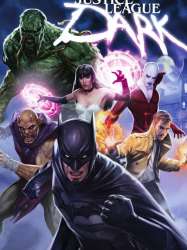
Justice League Dark (2017)
, 1h15Réalisé par Jay Oliva
Origine Etats-Unis
Genres Science-fiction, Thriller, Fantasy, Action, Animation
Thèmes Batman, Superman, Super-héros, Super-héros inspiré de comics, Extraterrestre
Acteurs Jason O'Mara, Matt Ryan, Camilla Luddington, Enrico Colantoni, Roger Cross, Jeremy Davies
Note71%





La Ligue de justice d'Amérique est contrainte de faire appel aux services spécifiques de John Constantine et de ses camarades spécialistes de l'occultisme pour contrer une importante menace d'invasion.

Batman contre Double-Face (2017)
Origine Etats-Unis
Genres Comédie, Action, Animation
Thèmes Batman, Super-héros, Super-héros inspiré de comics
Acteurs Adam West, Burt Ward, Julie Newmar, William Shatner, Steven Weber, Jim Ward
Note62%





Batman et Robin sont invités à une démonstration très secrète animée par le professeur Hugo Strange et son assistant, le Dr Harleen Quinzel, qui pourrait éventuellement changer à jamais le futur de Gotham. En cours de route, Batman s'arrête au pénitencier d'État de Gotham pour rendre visite à Catwoman (dont la tentative de suicide du premier film a échoué) pour lui remettre un livre de poésie d'Elizabeth Barrett Browning. C'est quelque chose qui la tiendra occupée pendant les 36 prochains mois de sa vie jusqu'à ce qu'elle soit définitivement libérée de prison. Au laboratoire, ils rencontrent le procureur et allié de Bruce Wayne dans la guerre contre le crime Harvey Dent, célèbre pour avoir arrêté un gang de contrefacteurs de pièces tout en conservant un quartier à deux faces en souvenir de l'affaire.
 , 2h31
, 2h31Réalisé par Zack Snyder
Origine Etats-Unis
Genres Science-fiction, Fantastique, Fantasy, Action, Aventure
Thèmes L'enfance, Batman, Superman, Extra-terrestres, Super-héros, Super-héros inspiré de comics, Extraterrestre
Acteurs Henry Cavill, Ben Affleck, Gal Gadot, Amy Adams, Jesse Eisenberg, Diane Lane
Note64%





Enfant, Bruce Wayne fuit l'enterrement de ses parents (un flash-back montre leur assassinat par un inconnu), puis tombe dans la caverne où une nuée de chauve-souris lui inspire son identité de héros. Des années plus tard, alors que Superman affronte le général Zod (événements vus dans le film Man of Steel) à Métropolis, Bruce tente de sauver des gens dans un bâtiment de Wayne Enterprises sans y parvenir complètement. Héros en activité depuis près de 20 ans à Gotham City sous l'identité de Batman, Wayne est persuadé que l'être surpuissant sera un jour la perte de l'Humanité et qu'il convient de se préparer à l'éliminer.

Suicide Squad (2016)
, 2h3Réalisé par Paul Feig, David Ayer, Zack Snyder
Origine Etats-Unis
Genres Science-fiction, Fantastique, Fantasy, Action, Aventure, Policier
Thèmes La prison, Sport, Arts martiaux, Super-héros, Super-héros inspiré de comics
Acteurs Will Smith, Jared Leto, Margot Robbie, Jai Courtney, Joel Kinnaman, Cara Delevingne
Note59%





Avec la mort de Superman, Amanda Waller, qui dirige le programme ARGUS, craint l'apparition du prochain méta-humain qui pourrait attaquer l'humanité. Pour prévenir cette possibilité, elle fait adopter le projet Task Force X (Force Spéciale X), visant à utiliser une équipe de criminels aux capacités hors normes pour répondre aux menaces, mais de façon non officielle. Elle a déjà plusieurs noms sur sa liste, comme le tireur d'élite Floyd Lawton / « Deadshot », capturé par Batman en lui rappelant la vie qu'il fait mener à sa fille Zoe, la psychopathe Harley Quinn, ancienne psychiatre de l'asile d'Arkham tombée sous le charme du Joker, arrêtée par Batman alors qu'elle était coincée dans une voiture qui coulait dans une rivière, le tueur monstrueux Waylon Jones, surnommé « Killer Croc », Digger Harkness, un voleur australien capturé par Flash alors qu'il dérobait des diamants et El Diablo, un gangster mexicain doué de pyrotechnie qui s'est rendu lui-même après avoir involontairement brûlé sa femme et ses enfants. Amanda Waller a déjà recruté le Colonel Rick Flag, soldat émérite. Lorsqu'elle présente le projet au Général Edwards, elle lui montre aussi les pouvoirs de l'Enchanteresse, un être mystique qui habite dans le corps de l'archéologue June Moon. Amanda Waller arrive à la contrôler car elle détient le cœur de la sorcière, et elle s'est arrangée pour faire en sorte que Rick Flag et June Moon deviennent amants afin de manipuler le soldat.
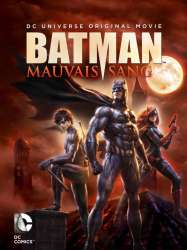
Batman: Mauvais Sang (2016)
, 1h12Réalisé par Jay Oliva
Origine Etats-Unis
Genres Science-fiction, Fantasy, Action, Animation
Thèmes L'enfance, Batman, Super-héros, Super-héros inspiré de comics
Acteurs Jason O'Mara, Sean Maher, Yvonne Strahovski, Morena Baccarin, Ernie Hudson, Gaius Charles
Note68%





Batwoman intercepte un groupe de criminels à Gotham City comprenant l'Électrocuteur, Tusk, Firefly, Killer Moth et autres. Quand un combat s'ensuit, Batman arrive. Ils sont confrontés à l'apparent chef des criminels, un homme appelé l'Hérétique, qui fait exploser des explosifs installés dans les locaux. Batman met Batwoman à l'abri et périt apparemment dans l'explosion.
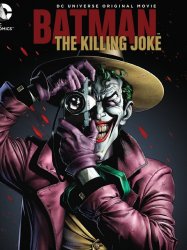
Batman: The Killing Joke (2016)
Origine Etats-Unis
Genres Drame, Action, Policier, Animation
Thèmes Batman, Super-héros, Super-héros inspiré de comics
Acteurs Kevin Conroy, Mark Hamill, Tara Strong, Ray Wise, Nolan North, Brian George
Note64%





Barbara Gordon traque les criminels de Gotham City dans le costume de Batgirl. Une nuit, elle tente d'arrêter des braqueurs seule mais échoue ; Batman intervient et capture l'un des voleurs en fuite. Les deux justiciers identifient l'organisateur : Paris Franz, neveu du parrain du crime Lord Francesco, qu'il souhaite évincer pour prendre sa place, et qui commence à être obsédée par Batgirl. Batman demande à sa protégée de le laisser faire mais elle refuse. Quand Franz piège Batgirl en la menant vers le cadavre de Francesco, Batman lui interdit de s'impliquer dans l'affaire. Furieuse, Batgirl commence à frapper Batman et le plaque au sol avant de l'embrasser, puis ils couchent ensemble. La nuit sème la confusion dans la relation entre Batman et Batgirl. Franz se manifeste à nouveau, piégeant Batman, et Batgirl intervient mais manque de le tuer. Barbara se rend compte que Batman avait raison et abandonne son costume.
 , 1h12
, 1h12Origine Etats-Unis
Genres Science-fiction, Comédie, Action, Aventure, Policier, Animation
Thèmes Batman, Super-héros, Super-héros inspiré de comics
Acteurs Adam West, Burt Ward, Julie Newmar, Wally Wingert, Jeff Bergman, William Salyers
Note66%





À Gotham City, les quatre plus grands criminels (le Joker, le Pingouin, le Sphinx et Catwoman) font peser une terrible menace. Les super-héros Batman et Robin vont faire face à ces méchants et devront même aller dans l’espace pour contrecarrer le plan diabolique de leurs ennemis.
 Connexion
Connexion
